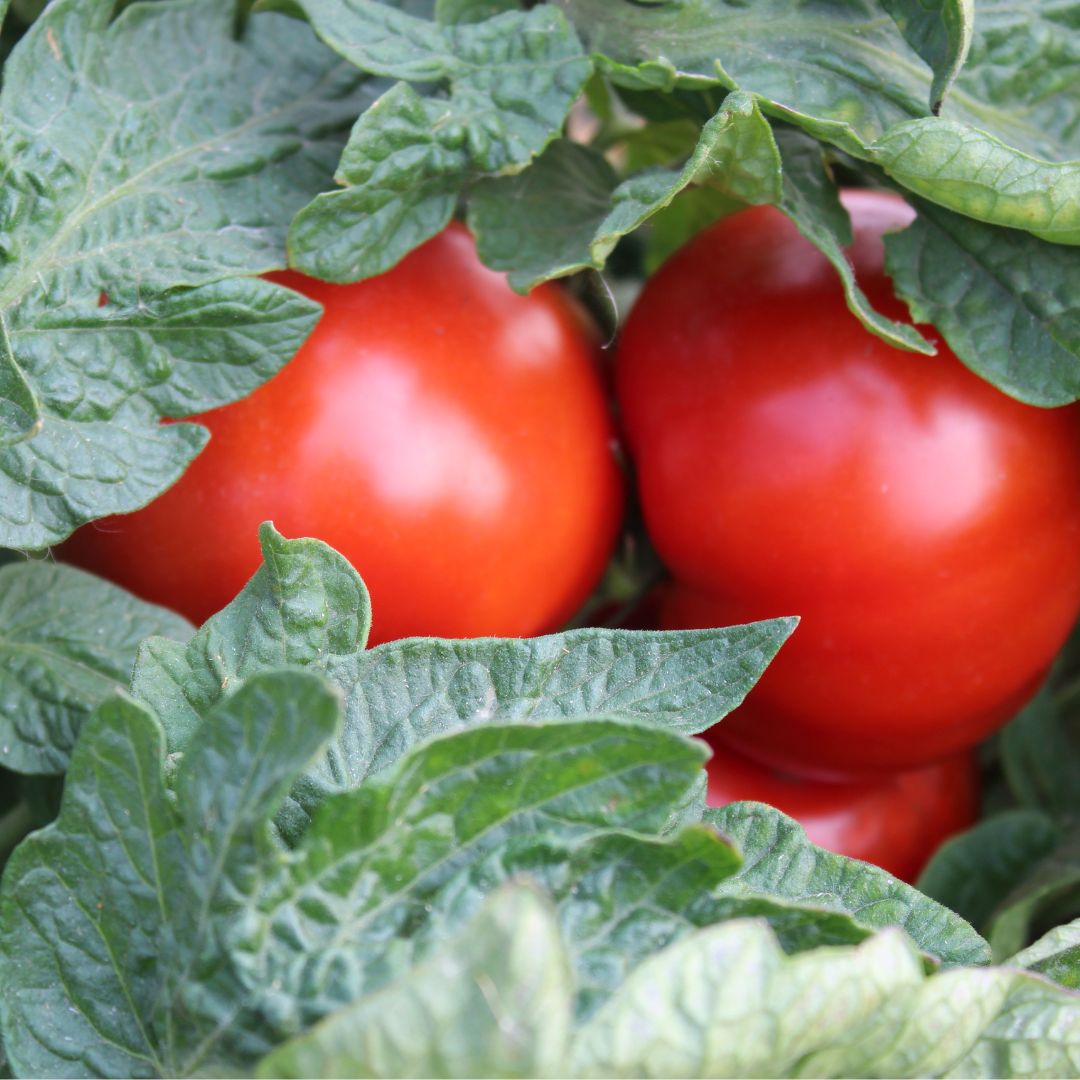Nothing says summer like a homegrown, sun-ripened, juicy tomato. I’m dreaming of chunky slices of meaty-textured Cherokee Purple tomatoes drizzled with a little bit of olive oil, sea salt, and cracked pepper–a slice of heaven!
Picture your ideal summer tomato– is it a cherry, slicer, or paste tomato? Plan to sow your seeds in 6-8 weeks ahead of the last frost. Wanna to stay on track with your sowing? If you don't already have it, download our Green Thumb Playbook and Garden Planner here. And then use this Tomato and Pepper Guide to cut through any confusion and decide which varieties to plant!
Even when there's snow on the ground, let’s start envisioning what your harvest will be on the hottest days of the year. Tomatoes and peppers are beloved heat-loving midsummer crops. They have a long growing season, which means they'll need to be started indoors and transplanted once it's warm enough outside.

Tomato and pepper seedlings should be grown for 6-8 weeks before transplanting. They typically go outdoors a week or two after your last frost date-- whenever nighttime temperatures are above 55 degrees. Since our last frost date is around May 21st, we start seeds no earlier than the second week of April here in Fullerton, ND.
That means, unless you're in a warm climate, you've still got a few weeks before you need to start planting. So this is the best time to do your planning and order your seeds. Let me help you choose your best varieties!
VARIETY SELECTION
We’ve all experienced wishing we could go back in time and make a different choice. Like wishing you had started your peppers a little earlier. OR that we had started some cherry tomatoes too. Let’s head off that wishful thinking and plan ahead.

Researching and buying seeds early means you have the time to consider and choose the perfect variety. We've got lots to choose from and if that makes you feel a little overwhelmed, here's a some guidance to help make those choices:
- Consider your space: Do you have a lot of space or are you space limited? Peppers are bushy, fairly compact plants. But tomatoes vary! Do you have room for a trellis for sprawling vining indeterminate tomatoes, like Amish Paste or Cherokee Purple, or is it best you stick to space hugging bushier determinate ones, like Caro Rich and Sheyenne? Peppers are pretty compact growing. Keep in mind that peppers and tomatoes are not only heat-lovers but also need lots of direct sun, so be sure to plan accordingly.
- Let your taste buds be your guide: What do you like to eat? This seems obvious, but when I get asked to recommend a tomato or pepper variety, I first ask if it’s for fresh eating for canning? Are you looking for sweet peppers, like Sweet Pepper Medley, for your salads or spicy ones, like Jalapeno, for salsas? Tomato sandwiches or tomato sauce—or both? Amish Paste and San Marzano are highly favored for tomato sauce and paste! Pepperoncini Greek peppers are prized for pickling!
- Consider disease resistance: Last year did you have issues with disease or pests? If you did, plan ahead: try not to plant your tomatoes or peppers in the same place as they were before, and try selecting disease-resistant varieties. Smaller tomatoes tend to always do better in the face of disease. Fox Cherry and Crimson Sprinter were two of our highest performing tomatoes under stress in our disease trials.
- Timing is golden: When do you want your harvest? Different varieties mature at different speeds. Koralik cherry and Fargo Yellow Pear, Silvery Fir Tree, Oregon Spring, and Tigerella tomatoes can be harvested around 60 days, while Sweet Apertif and Wisconsin 55 need 75 days. Another consideration is indeterminate tomatoes, like Cherokee Purple and Dakota Sport, two of my favorite slicers, grow and flower throughout the season, producing a staggered harvest. Determinate plants, like Oregon Spring and Manitoba, grow to a specific size, flower, and set fruit for a more limited time.
Download a PDF of our Tomato and Pepper Guide-- click here! All the details in one place—helping you decide which varieties meet basic criteria—so you know which ones to consider further! And which ones to get! Enjoy!
Your garden coach,
Theresa

